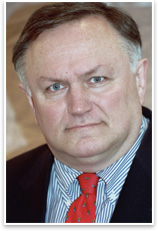
treasurer
No longer is the AIA primarily dependent upon dues for revenue. It still represents a large percentage certainly, but thankfully we’ve been able to diversify with contract documents, conventions, strategic partnerships, and other sources. There are other possibilities we need to explore. We can’t afford to put all our eggs in one (or just a few) basket(s). Working with the administration, the ExCom, and the Board, the Finance and Audit Committee will creatively consider options and make sound, practical, logical decisions. Expenses annually are budgeted to adhere to the Board-adopted Strategic Plan. The ExCom and the Board set policy, and the administration carries it out. It’s a very interactive process. Throughout the year, the Finance Audit Committee works closely with the chief financial officer and his staff and to adjust when the unexpected occurs (like Hurricanes Katrina and Rita). We all learn from the previous years as we craft the subsequent years’ budgets. (We try to work three to five years ahead.) We work closely with independent auditors, bankers, and financial advisors to assure the funds are available when needed, and to be prepared with adequate reserves, should a rainy day occur. It’s all very transparent, open, and fiscally prudent. Continuing to seek opportunities to share among components at all levels, striving truly to be “One AIA,” will be a priority, as will attempting to eliminate duplication. In pursuing common interests efficiently and effectively, this small but powerful, wonderful professional organization of ours can continue to deliver value and help allow architects to realize their clients’ hopes and dreams. Healthy finances will take mutual effort and much hard work, but will enable the AIA’s recovery and growth to stay on pace. AIA National Service
Local AIA Service
Civic Service
Professional
Personal
|
||
Copyright 2007 The American Institute of Architects. All rights reserved. Home Page |
||
news headlines
practice
business
design

